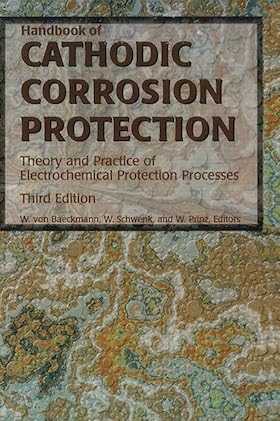
-----
Vehicle Rust Protection System
Sirs,
I am a chemical engineer and a doctorate candidate in cp applications. Meanwhile as a beginner I was of the opinion of laying my hand on "electronic rust protection system" as a dealer but I was not able to answer the question(s) of If this system will actually protect vehicles as it promised. I want anyone to help answer me, I will be pleased.
Jacob Kalu- Athens, Attica, Greece
2003
2003
If it's like the electronic rust protection systems for boats, I don't see how it could possibly work since the car is not immersed in water or any other ionic path, and that's one of the necessary parts of a galvanic corrosion system or a galvanic protection system.
But there are often new inventions that seem like impossible magic until they are explained, and that could be the case here. How is it supposed to work?

Ted Mooney, P.E.
Striving to live Aloha
finishing.com - Pine Beach, New Jersey
Ted is available for instant help
or longer-term assistance.
There are many vehicle rust protection systems commercially available. Those that work by treating the metal object to be protected from oxidation as a cathode in a direct current electrolysis circuit have limited effectiveness. As Mr. Mooney has stated, the main drawback is the need for an electrolytic solution between the cathode and anode to complete the series circuit. Even with the placement of several anodes around a vehicle there is little guarantee that the necessary ionic path will be present to complete the electrical circuit needed to prevent corrosion.
There is a cathodic protection system based on capacitive coupling that works excellent for vehicles by overcoming the shortcomings mentioned above. Basically, a positive plate carrying a pulsed DC voltage is placed adjacent to a dielectric material which is placed adjacent to the car body. The positive plate and car body share a common ground. During each pulse a positive charge develops on the positive plate and a corresponding negative charge develops on the adjacent car body which acts a negative plate in capacitive coupling. As each pulse cycle ends the excess electrons on the negative plate repel away and create an impressed current in the car body. These surplus electrons bleed off and become available at corrosion sites to reduce any chemicals on the car surface that might otherwise cause oxidation of the steel.
The car paint acts as a dielectric coating and becomes a potential capacitive surface. When an aqueous solution contacts the paint surface a capacitive surface is formed. The car body is the negative plate, the paint is the dielectric material and the aqueous solution functions as the positive plate. If an electrolyte makes contact with any exposed area of the car body (such as a nick in the paint) and creates an oxidizing environment, the chemical in the electrolyte which would normally remove electrons from the steel are more likely to be reduced by the surplus electrons pumped in from the capacitive coupling. What makes this process so effective is that no ionic path is required between the corrosion site and the anode (coupling positive plate of the capacitor). The complete redox reaction takes place between the cathodic car body and the anodic electrolyte acting as negative and positive capacitor plates respectively.
Michael Wisniewski- Chatsworth, California
2003
Hi Michael. That was an amazingly detailed explanation. I know I'm impressed. Can you fill us in on your background and how you came to know so much about the product? It would make your explanation more helpful.
In thanks,
David S. Hunter- Toronto, Ontario, Canada
2004
What is the name of the product that you mention to stop rust and where can I buy it?
Dean Shelvey- Morden, MB, Canada
2007
Q, A, or Comment on THIS thread -or- Start a NEW Thread
